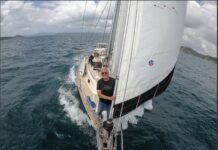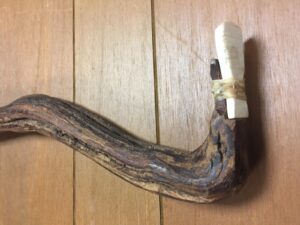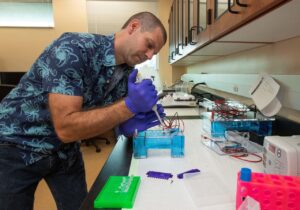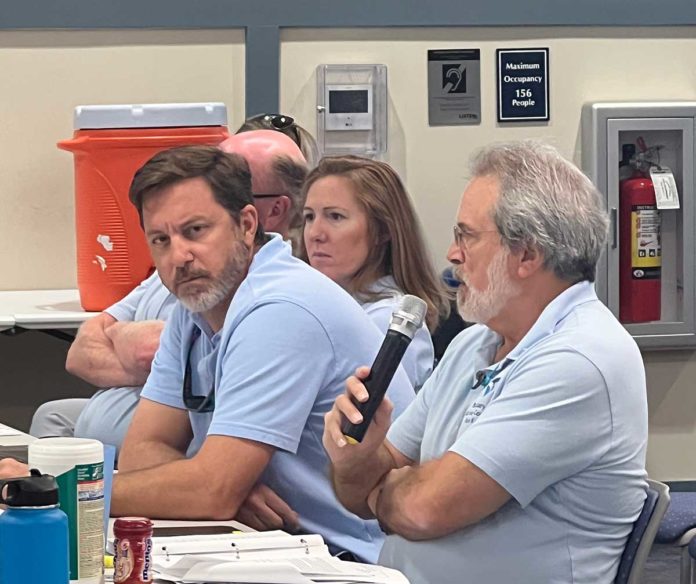
By Alex Rickert and Jim McCarthy
Day one of a two-day December meeting of the Florida Keys National Marine Sanctuary Advisory Council (SAC) was filled, for the most part, with support from the council for regulatory changes included in the sanctuary’s Restoration Blueprint, a wide-ranging document proposing the most significant sanctuary regulatory changes in more than 20 years.
Gathering arguably the most diverse array of Keys scientists, business owners and industry experts to offer input on the proposed document, the Dec. 13-14 meeting served as the SAC’s last chance to offer recommendations to sanctuary staff before a draft proposal makes its way to state and federal agencies for final review.
Though council leaders initially considered a three-day meeting to discuss the dozens of distinct changes outlined in the blueprint that have thus far drawn vocal support and criticism from different scientific and business factions, the meeting’s opening act moved much quicker than anticipated, with the group moving ahead to tackle a large chunk of items earmarked for day two.
According to sanctuary superintendent Sarah Fangman, the pace was made possible by a review process developed by SAC chair George Garrett and vice chair Ben Daughtry, along with full buy-in from council members tasked with “doing their homework” since the council’s Oct. 18 meeting.
Garrett and Daughtry used a previous survey of SAC members’ discussion priorities to identify nearly 30 points of interest, challenging council members to draft preliminary shareable statements of support and topics of concern for each issue. Working through each issue, the group added necessary language and amended problematic phrases, taking votes when necessary to craft an overall statement of support or lack thereof from the council.
“I give George and Ben an enormous amount of credit for developing a very well thought-out process to help a diverse group of people with lots of different views come to some decisions about a lot of complex issues,” Fangman told the Weekly. “These are our oceans; we can’t screw this up.”
Daughtry reminded the council that their goal was to come up with collaborative statements of support and concern, rather than a simple vote on each proposed rule change.
“We’re voting on, ‘Hey, this is a proposal that’s out there. Make sure that if it goes forward, these are the things that we see as a group that are positive, and these are the things that we want you to take into consideration,’” he said.
Proposed changes receiving near-unanimous support included: all proposed expansions of the sanctuary’s existing boundary; prohibition of discharges of any kind except cooling water from cruise ships; clarification of the purposes and expansion of the possible time frame for temporary regulations from 60 to 180 days; establishment of a single “archaeological research” permit category for historical resources; strengthening the sanctuary’s regulations governing at-risk or derelict vessels to more closely align with state regulations; requiring single or rafted vessels with a total length of 65 feet or more to use designated “large vessel” mooring buoys; and expansion of the Tennessee Reef, Western Sambo and Tortugas South conservation zones.
A proposed prohibition on the feeding and attracting of fish, including sharks, from vessels or while diving was met with more criticism, with several council members expressing concern that the drafted rule did not provide a clear enough exclusion for chumming during traditional fishing.
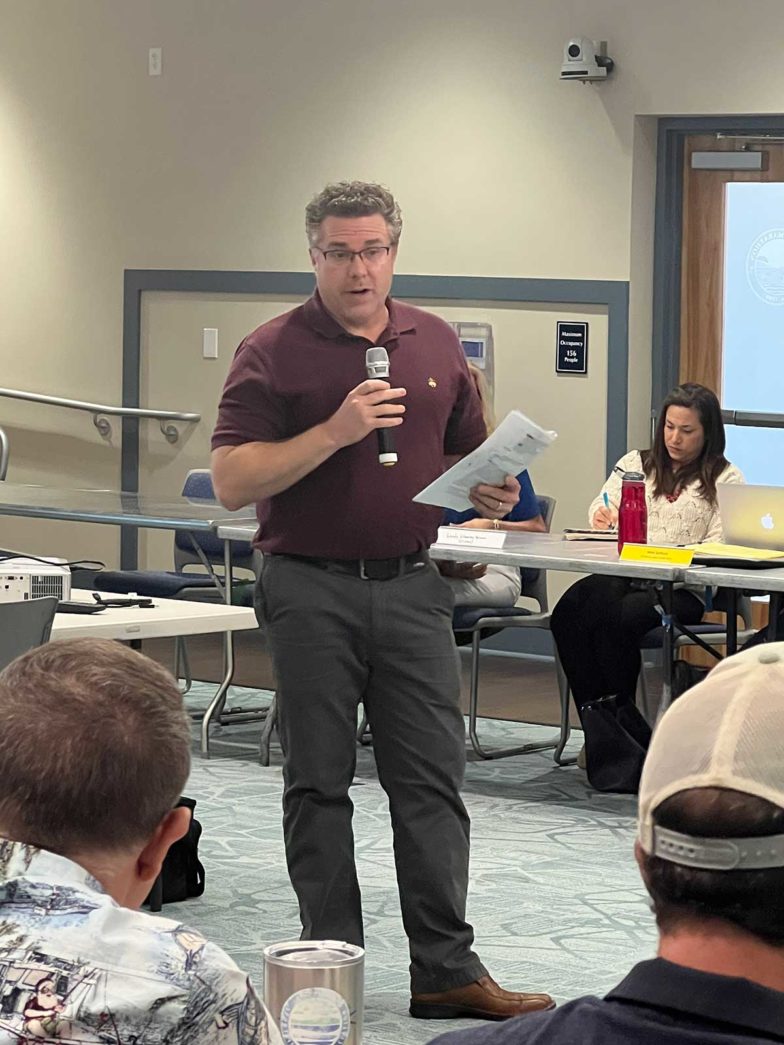
Proponents of the rule highlighted the safety risks created when predators come to associate divers and boats with hand-delivered food, while others questioned the exclusion of dock-based feeding activities in the proposal or the overarching impacts of behavioral changes brought about by feedings. The council also noted a need for regulatory consistency between state and federal waters, as the practice is already theoretically prohibited in the former.
In what the council eventually adopted as its summary statement on the proposal, charter captain Will Benson said he “supported safety concerns, particularly, within this rule, but wanted to be careful of overstepping into fisheries management or impacts to traditional fishing.”
Proposals to eliminate existing sanctuary preservation areas (SPA) at French Reef in the Upper Keys and Rock Key in the Lower Keys were turned down by the sanctuary council. Many in favor of keeping the Rock Key SPA noted the coral restoration work completed in the past. In addition, it’s an area where several large fish species, like black grouper, find shelter. As for French Reef, those concerned with giving away protections said there are natural populations of elkhorn coral. Allowing anchoring, fishing and trapping could harm the threatened coral species. Sanctuary council members agreed there should be further justification and the ability to implement a monitoring study before eliminating the SPAs.
Members of the council supported proposals for the newly-created nursery restoration areas, which would be regulated similar to conservation areas in order to protect sensitive corals and other organisms while they are being propagated. Fishing, anchoring and a requirement that vessels remain in transit through the area are among the regulations for the nursery restoration areas.
A proposal to create a new sanctuary preservation area off the Upper Keys saw support from the council. Known as Turtle Rocks, the proposed SPA would protect one of the only known patches of fused staghorn coral in the Keys. It would also safeguard a well-developed mid-channel reef system that contains several threatened coral species. Members on the sanctuary advisory council requested changes to the location and size of the newly-proposed Turtle Shoal SPA off Marathon to reflect protection of corals in the area.
Expanding existing SPAs at Carysfort Reef and Alligator Reef were supported by the council to protect deeper coral reef habitat. But not all were on board with expanding the Sombrero Key SPA. While the expansion of Sombrero Key is slight, those concerned with the proposal felt the expansion would be taking in sand and very low grass. The current closure protects some hard bottom and a diverse group of coral. Members of the council believed the expansion should be more strategic and based on science.
A new no-anchor regulation at SPAs in the Keys was supported by the sanctuary council in an effort to safeguard corals. But not all council members were on board with a proposal to eliminate catch and release trolling at four SPAs at Conch Reef, Sombrero Key, Alligator Reef and Sand Key. Those supporting the measure noted that SPAs already disallow fishing within the boundaries. Therefore, any trolling with the explicit intent of catch and release should be not allowed. But those concerned with the idea said there’s been little evidence of any problems over the years as far as complaints. The sanctuary council didn’t take a stance on the proposal as the first meeting concluded.
At the conclusion of Wednesday’s meeting, the modified document of support statements and concern topics will be rendered to sanctuary staff as a collectively endorsed recommendation from the council. Following this meeting, the Restoration Blueprint will undergo an extensive 18- to 20-month review by sanctuary staff, including consultation with stakeholder agencies, before a final review at the state and federal levels.
A report on the second day of the advisory council’s meeting will be available at keysweekly.com and in the Dec. 22 print editions of the Keys Weekly newspapers.
More information about the proposed Restoration Blueprint is at https://floridakeys.noaa.gov/blueprint/.
